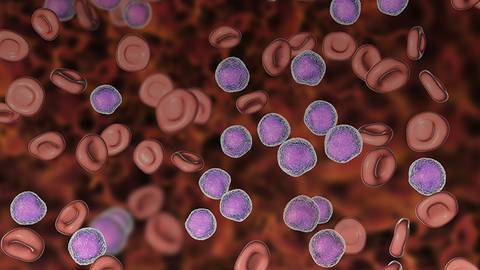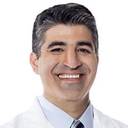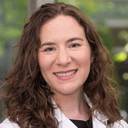Announcer:
Welcome to CME on ReachMD. This episode is part of our MinuteCME curriculum.
Prior to beginning the activity, please be sure to review the faculty and commercial support disclosure statements as well as the learning objectives.
Dr. Moskowitz:
This is CME on ReachMD, and I’m Dr. Alison Moskowitz from Memorial Sloan Kettering Cancer Center. Here with me today is Dr. Alex Herrera from City of Hope.
So let’s talk about how to apply the data from ECHELON-1 into clinical practice, and I’d like to see how you would approach the following case scenario. So you have a 27-year-old female patient who has an International Prognostic Score [IPS] of 5 and is diagnosed with stage 4 Hodgkin lymphoma associated with bone and liver involvement.
Dr. Herrera, how would you treat this patient?
Dr. Herrera:
Thanks for the question, Dr. Moskowitz. So as you described, this patient has stage 4 Hodgkin lymphoma, and this is the kind of patient who, when the ECHELON-1 data first came out, you know, it really seemed, based on subset analyses, that this was the kind of patient who might benefit from the treatment most. So a young patient with stage 4 disease, as opposed to stage 3, with multiple sites of extranodal involvement and who has a high IPS score. So, you know, kind of traditionally a pretty high-risk patient. When the data first were available, this was the kind of patient I really favored using brentuximab AVD [doxorubicin + vinblastine + dacarbazine] in. Now I think the uptake of the regimen wasn’t necessarily universal at first. I think many people still used ABVD [doxorubicin + bleomycin + vinblastine + dacarbazine]. Now that there is an overall survival benefit, I think, really, the field has shifted and I would say most providers are offering brentuximab AVD for any patient with advanced-stage Hodgkin lymphoma, but especially this kind of high-risk patient. We think as a population of patients where the regimen might be most useful, the extra toxicities that we take on in terms of peripheral neuropathy, the need to use growth factor to abrogate the risk of neutropenia and febrile neutropenia and sepsis, really, I think are worth taking on in a high-risk patient like this where we’re really trying to give them the best shot at a cure. And so just to summarize, I think in this patient with high-risk advanced-stage Hodgkin lymphoma, I would aim to use brentuximab vedotin [BV] combined with AVD.
Dr. Moskowitz:
Thank you so much, Dr. Herrera. I completely agree that this is the exact patient that I am comfortable using brentuximab plus AVD and who I believe is probably getting more benefit out of the treatment than a patient who may be lower risk. And one of the things that was even really exciting that came out of the recent publication from The New England Journal showing updated data from ECHELON-1 was the data with regard to fertility. Now this showed that it appears that BV-AVD likely does not impact fertility any differently than ABVD, at least with regard to the number of patients who ended up having pregnancies after receiving the treatment on either arm, and so that makes me feel more comfortable in using this regimen for young women like this particular patient.
The other interesting thing that came out of the recent update was the rate of hematologic malignancies. They looked at the rate of malignances overall or secondary malignancies between the 2 arms, and there was a slightly higher rate of secondary malignancies seen with the patients who received ABVD, and for some reason, that was not related to patients getting secondary solid tumors, as the rates of solid tumors were actually the same. There was actually a slightly higher rate of secondary hematologic malignancies, and we’re not quite sure what the reason is for that, but at the very least, it doesn’t appear that we’re seeing a higher rate of secondary malignancies when we’re using the BV-AVD regimen.
So just to summarize, I agree with Dr. Herrera. This is a patient who’s high risk, who would likely benefit the most from receiving a treatment such as BV-AVD, and thankfully, because of the data with regard to fertility, I feel comfortable using this regimen in the patient, a young woman such as this.
So this has been a great micro discussion. Unfortunately, our time is up, but thank you for listening.
Announcer:
You have been listening to CME on ReachMD. This activity is provided by Prova Education and is part of our MinuteCME curriculum.
To receive your free CME credit, or to download this activity, go to ReachMD.com/Prova. Thank you for listening.


 In support of improving patient care, Global Learning Collaborative (GLC) is jointly accredited by the Accreditation Council for Continuing Medical Education (ACCME), the Accreditation Council for Pharmacy Education (ACPE), and the American Nurses Credentialing Center (ANCC) to provide continuing education for the healthcare team.
In support of improving patient care, Global Learning Collaborative (GLC) is jointly accredited by the Accreditation Council for Continuing Medical Education (ACCME), the Accreditation Council for Pharmacy Education (ACPE), and the American Nurses Credentialing Center (ANCC) to provide continuing education for the healthcare team.






Facebook Comments